American Car Market | Colombia and Uruguay, May 2025: Chinese Brands Accelerate Expansion in South America
![]() 06/27 2025
06/27 2025
![]() 606
606
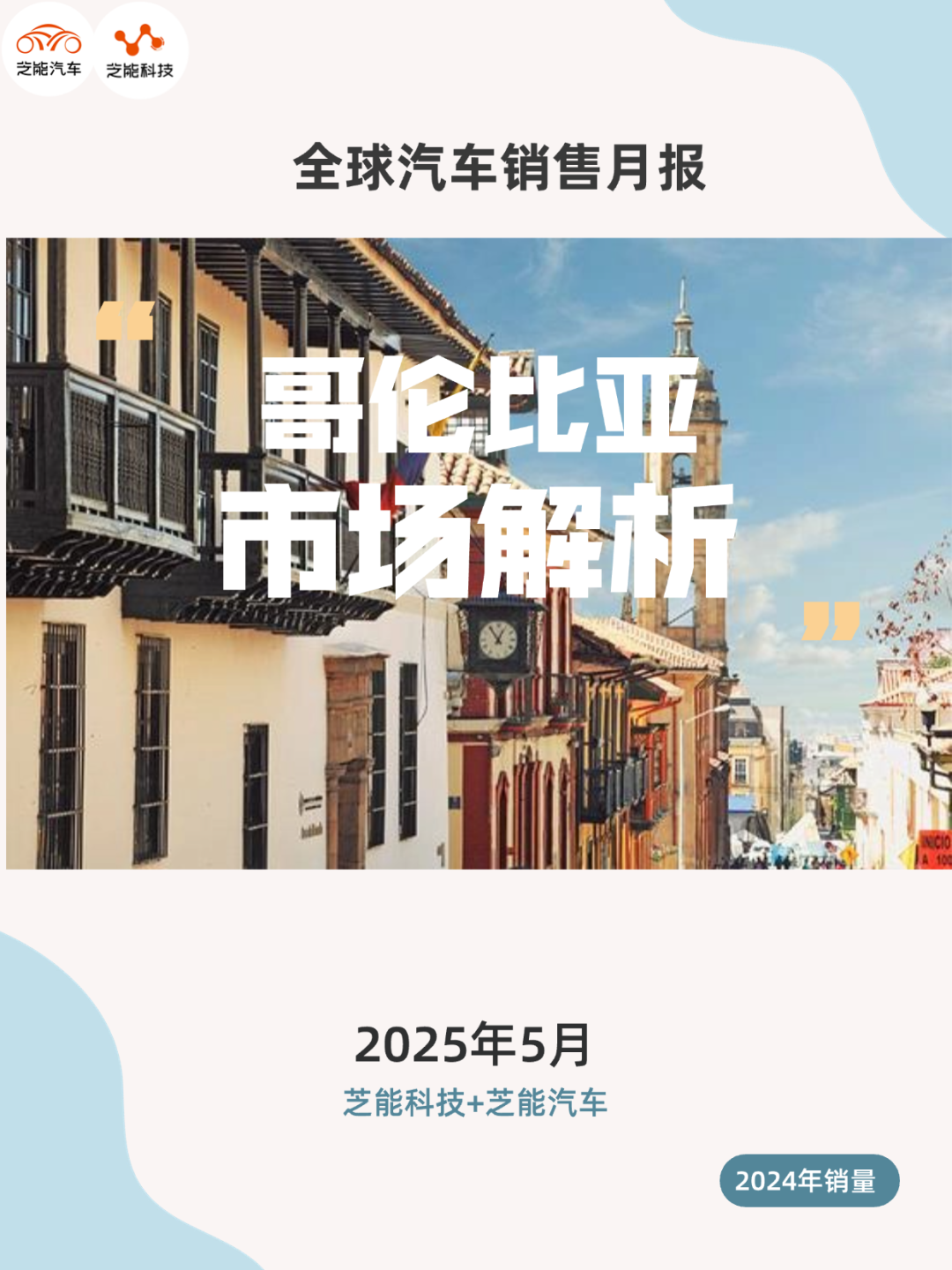
In May 2025, the new car markets in both Colombia and Uruguay witnessed substantial growth.
In Colombia, spearheaded by BYD, Foton, JAC, and other Chinese brands, sales of new energy and commercial vehicles surged, propelling these brands to the forefront of the market.
In Uruguay, BYD and Chery emerged as market leaders, collectively pushing the share of Chinese brands to nearly 30%.
Drawing on sales data, we delve into the evolving trends of Chinese brands in these pivotal South American markets.
01 Colombia: Steady Mainstream Market, Chinese Brands Accelerate Growth
In May 2025, Colombia's new car market continued its recovery trajectory, with monthly sales reaching 19,729 units, up 33.1% year-on-year, marking a new annual high. Year-to-date sales stood at 87,033 units, a 23.1% increase.
Japanese and Korean brands dominate the market, with Toyota reclaiming the top spot, followed by Kia and Renault. The top three brands hold market shares of 12.9%, 12.4%, and 11.5%, respectively, forming a resilient "traditional trio."
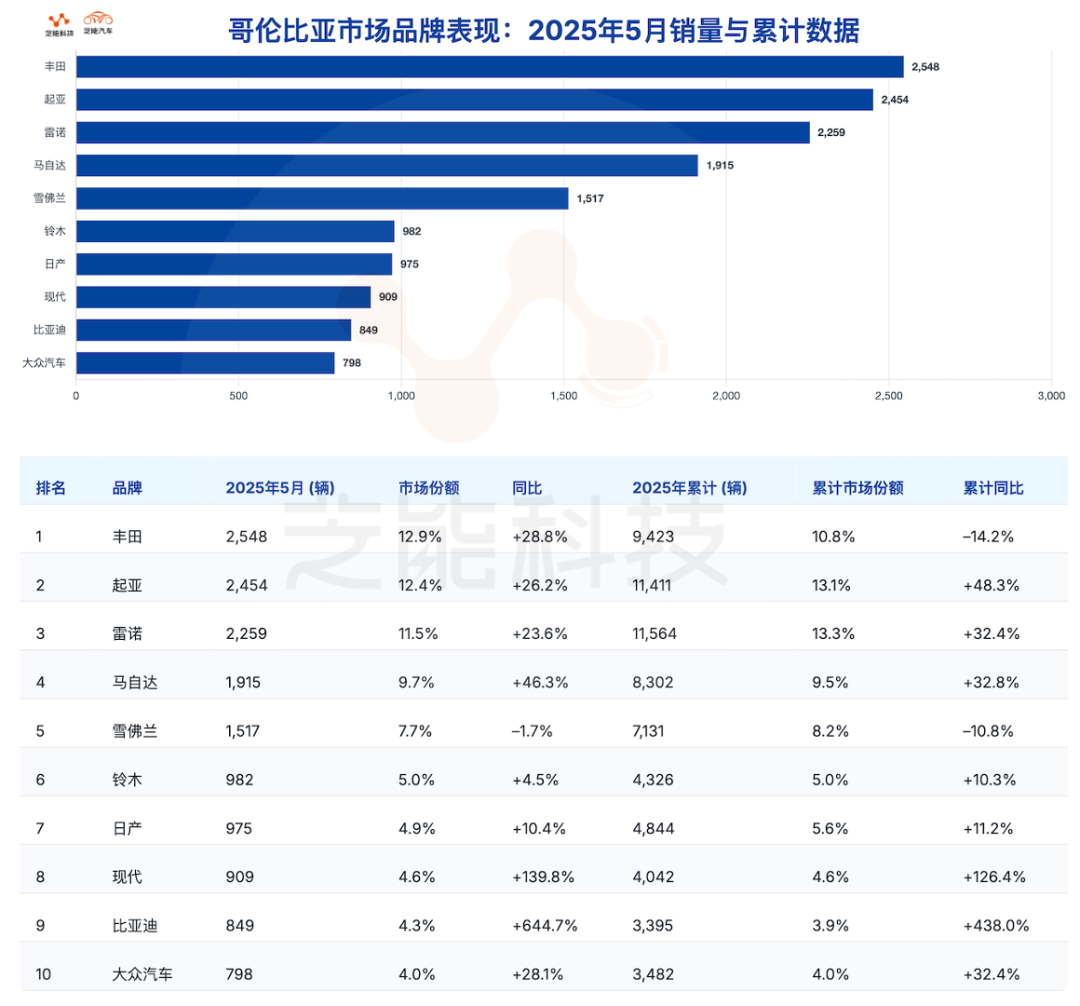
Brand Rankings:
◎ Mazda recorded substantial growth, jumping to fourth place with a 46.3% increase, showcasing strong product appeal and channel strength.
◎ Chevrolet was the only mainstream brand to experience a year-on-year sales decline, down 10.8% cumulatively.
Rising Chinese Brands:
◎ BYD sold 849 units in May, a 644.7% year-on-year increase, capturing a 4.3% market share and ranking ninth overall.
◎ Foton also entered the top 11 with 631 units, a 115.4% increase, focusing on the light commercial vehicle segment.
◎ JAC ranked 14th with 233 units, a 77.9% year-on-year increase.
◎ JMC, Chery, Changan Deep Blue, Dongfeng, FAW, and others also featured in the top 30, indicating a trend of widespread success.
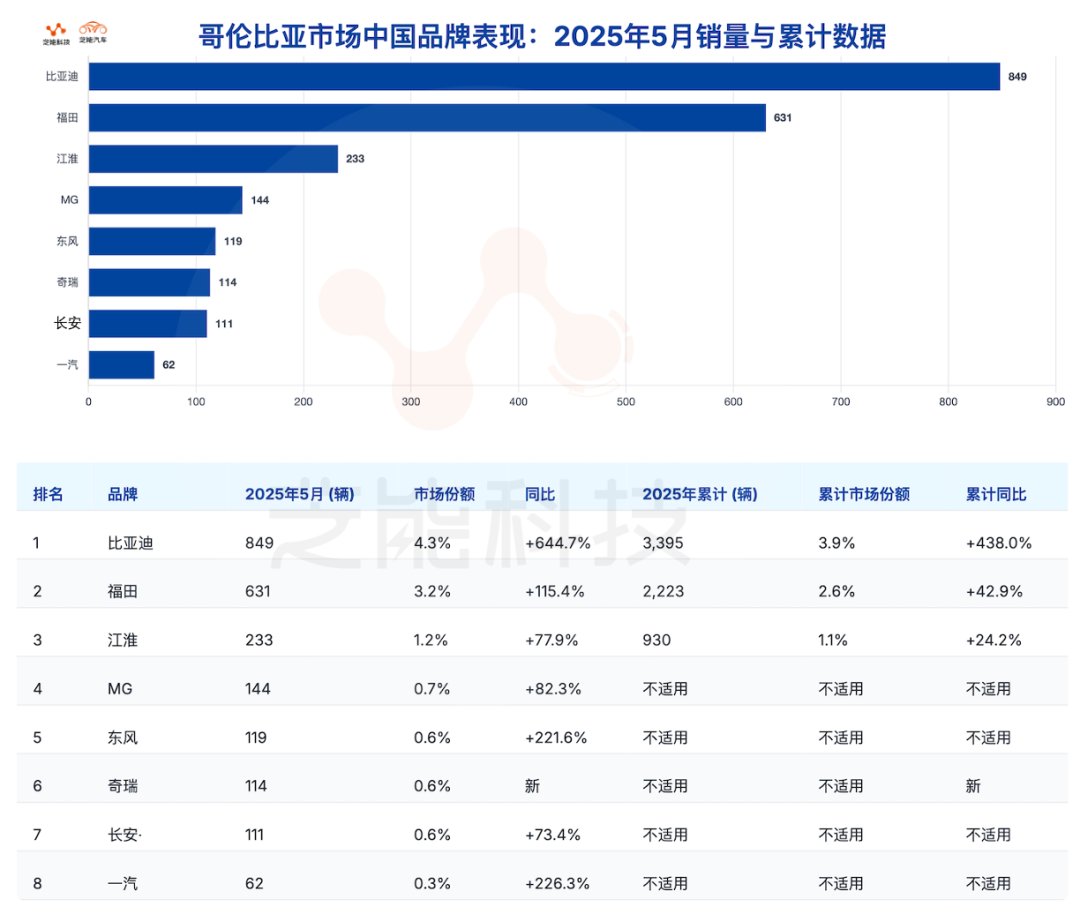
Power Structure:
◎ Although new energy vehicles have not yet dominated the Colombian market, their growth is exceptionally rapid.
BYD's pure electric and plug-in hybrid models, in particular, have seen remarkable growth. Its newly launched "Yuan Up" sold 501 units per month, ranking seventh, and stands out as one of the most prominent Chinese passenger vehicle models.
Another micro electric vehicle, the "Seagull," also entered the top 25 with monthly sales of 251 units, indicating growing acceptance for urban commuting.
◎ In traditional models, the Toyota Corolla Cross retained its lead with 953 units sold and a 160.4% year-on-year increase, followed by the Kia K3 and Mazda CX-30 in second and third. Renault's Duster experienced a 12.4% year-on-year decline, suggesting weaker market reception for older models.
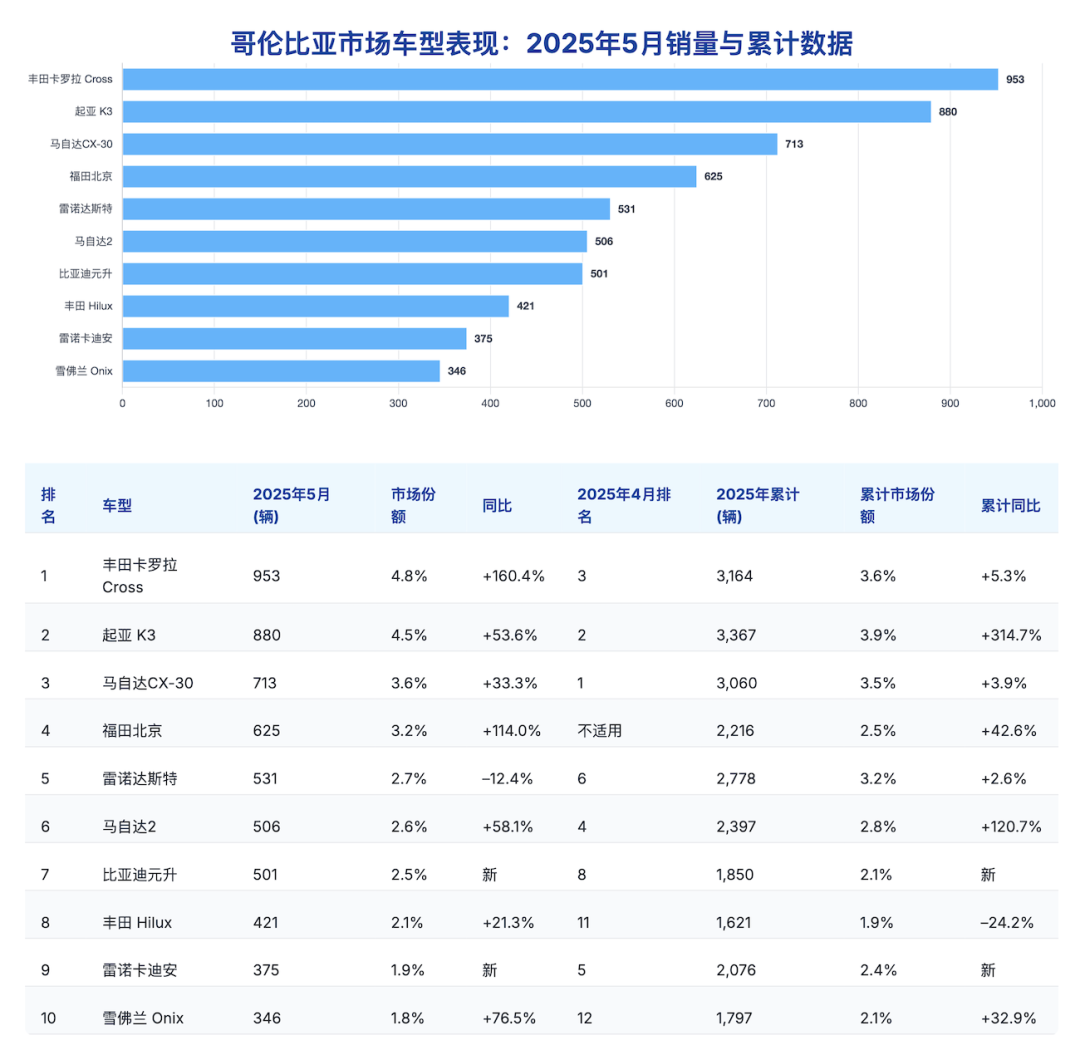
Chinese brands in Colombia adopt a "differentiated positioning" strategy:
◎ Commercial vehicles target blue-collar workers and SMEs with advantages in price and functionality, exemplified by Foton's BJ series.
◎ Passenger vehicles appeal to young urban users through intelligence and new energy labels, such as BYD's "Yuan Up" and "Seagull".
In terms of channels, as brands accelerate local dealership systems, after-sales and financial service support are gradually enhancing, ensuring sustained sales.
02 Uruguay: Chinese Brands Soar, Market Share Nears 30%
Compared to Colombia's traditional structure, the Uruguayan market, albeit smaller, boasts a higher penetration of Chinese brands.
In May 2025, the Uruguayan new car market sold 5,265 units, up 9.8% year-on-year. Year-to-date sales reached 25,824 units, a 9.9% increase. The combined market share of Chinese brands hit 27.8%, approaching one in every four new cars sold.
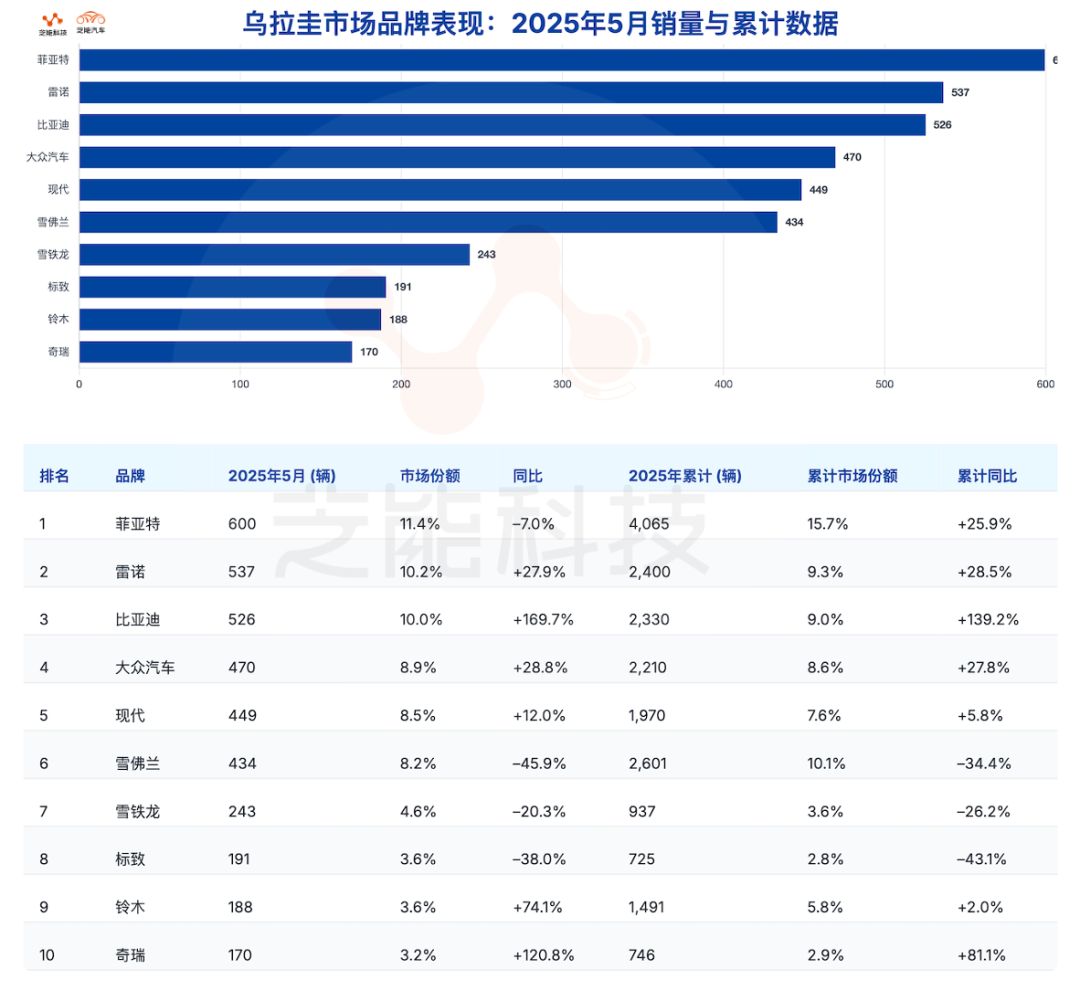
◎ BYD's performance in Uruguay was outstanding, selling 526 units in May, a 169.7% year-on-year increase, ranking third with a 10% market share. Its pure electric and plug-in hybrid models have clear market positioning and strong price competitiveness, ideal for urban use and government procurement. Cumulative sales since the year's start reached 2,330 units, making it the new energy sector leader.
◎ Chery also recorded significant growth, up 120.8% year-on-year, solidifying its position as the second-largest Chinese brand. Its small SUV lineup balances cost-effectiveness and space practicality, appealing to local families.
◎ Other prominent Chinese brands include MG, JAC, Dongfeng, etc., gradually expanding their influence with models tailored to local road conditions and fuel economy.
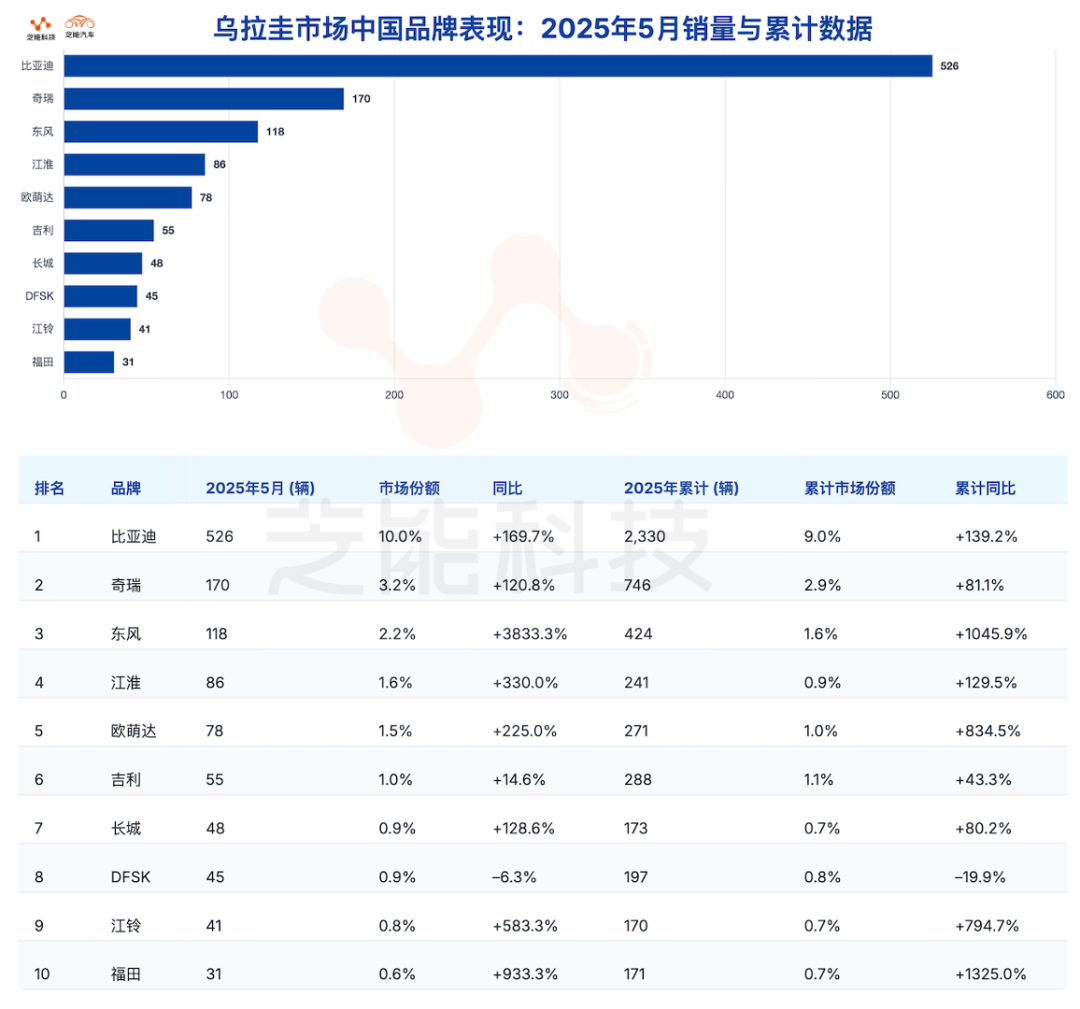
Uruguay's flexible tax system and open policies provide a fertile testing ground for Chinese brands:
◎ BYD enjoys high penetration in government and taxi markets, with some new energy models receiving financial subsidies.
◎ Chery and MG have entered the mid-to-low-end consumer market with traditional internal combustion engine vehicles, demonstrating strong adaptability.
Mainstream European and American brands have faltered. Chevrolet's sales declined 45.9% year-on-year, while French brands like Peugeot and Citroen saw declines exceeding 38% and 20%, respectively.
In contrast, Chinese brands' offensive appears more robust, relying on a strategy of focusing on popular models, short-term promotions, and extensive network deployment to establish a solid market foundation.
From a model perspective, BYD concentrates on small-to-medium new energy models, while Chery focuses on fuel-efficient SUVs.
In Uruguay, Chinese brands often operate through cooperative dealerships with local business groups, avoiding high-risk factory investments and focusing on sales and localized operations breakthroughs.
Summary
Colombia and Uruguay exhibit distinct market characteristics: the former boasts large capacity and a stable structure, with Chinese brands in a rapid catch-up phase; the latter, though smaller, is flexible and fully penetrated by Chinese brands.
As Chinese automakers continue to refine their product structure and deepen overseas channel expansion, the South American market promises to be the next significant growth hub.







